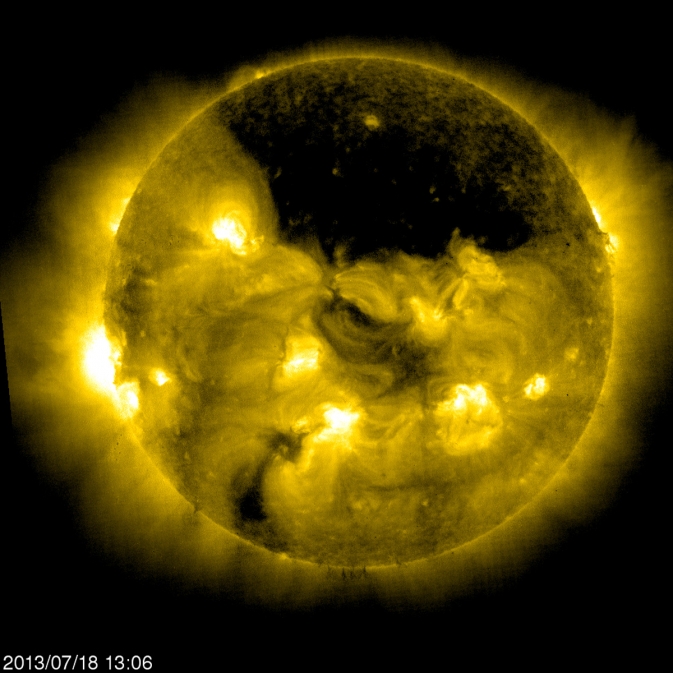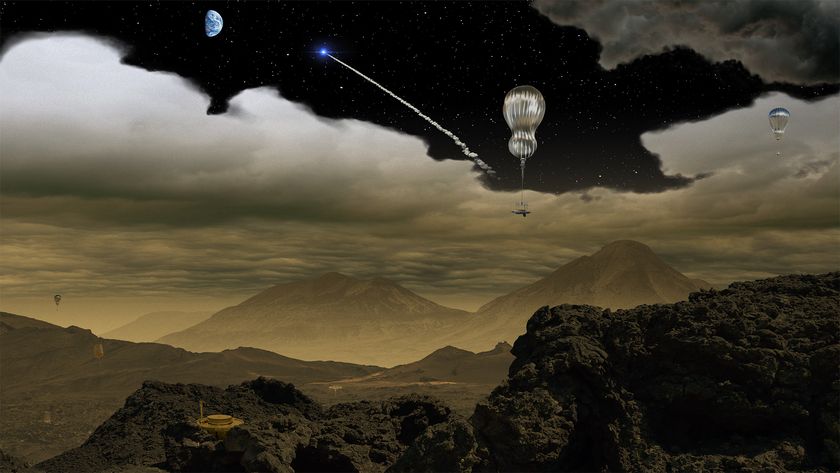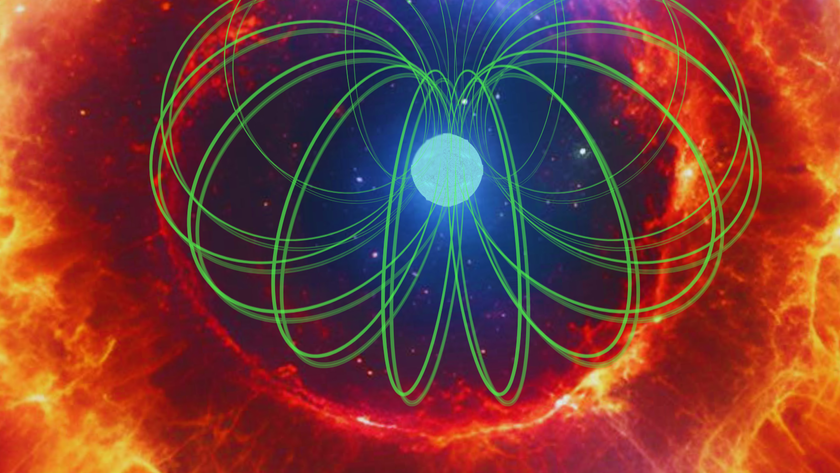Spacecraft Sees Giant 'Hole' In the Sun (Video)

A space telescope aimed at the sun has spotted a gigantic hole in the solar atmosphere — a dark spot that covers nearly a quarter of our closest star, spewing solar material and gas into space.
The so-called coronal hole over the sun's north pole came into view between July 13 and 18 and was observed by the Solar and Heliospheric Observatory, or SOHO. NASA released a video of the sun hole as seen by the SOHO spacecraft, showing the region as a vast dark spot surrounded by solar activity.
Coronal holes are darker, cooler regions of the sun's atmosphere, or corona, containing little solar material. In these gaps, magnetic field lines whip out into the solar wind rather than looping back to the sun's surface. Coronal holes can affect space weather, as they send solar particles streaming off the sun about three times faster than the slower wind unleashed elsewhere from the sun's atmosphere, according to a description from NASA.
"While it’s unclear what causes coronal holes, they correlate to areas on the sun where magnetic fields soar up and away, failing to loop back down to the surface, as they do elsewhere," NASA's Karen Fox at the agency's Goddard Space Flight Center in Greenbelt, Md., explained in an image description.
These holes are not uncommon, but their frequency changes with the solar activity cycle. The sun is currently reaching its 11-year peak in activity, known as the solar maximum. Around the time of this peak, the sun's poles switch their magnetism. The number of coronal holes typically decreases leading up to the switch.
After the reversal, new coronal holes appear near the poles. Then as the sun approaches the solar minimum again, the holes creep closer to the equator, growing in both size and number, according to NASA.
The $1.27-billion (1 billion euros) SOHO satellite was launched in 1995 and is flying a joint mission between NASA and the European Space Agency (ESA). It watches solar activity from an orbit about the Lagrange Point 1, a gravitationally stable spot between Earth and the sun that is about 932,000 miles (1.5 million kilometers) from our planet.
Get the Space.com Newsletter
Breaking space news, the latest updates on rocket launches, skywatching events and more!
Follow Megan Gannon on Twitter and Google+. Follow us @Spacedotcom, Facebook or Google+. Originally published on SPACE.com.
Join our Space Forums to keep talking space on the latest missions, night sky and more! And if you have a news tip, correction or comment, let us know at: community@space.com.

Megan has been writing for Live Science and Space.com since 2012. Her interests range from archaeology to space exploration, and she has a bachelor's degree in English and art history from New York University. Megan spent two years as a reporter on the national desk at NewsCore. She has watched dinosaur auctions, witnessed rocket launches, licked ancient pottery sherds in Cyprus and flown in zero gravity on a Zero Gravity Corp. to follow students sparking weightless fires for science. Follow her on Twitter for her latest project.
Most Popular




